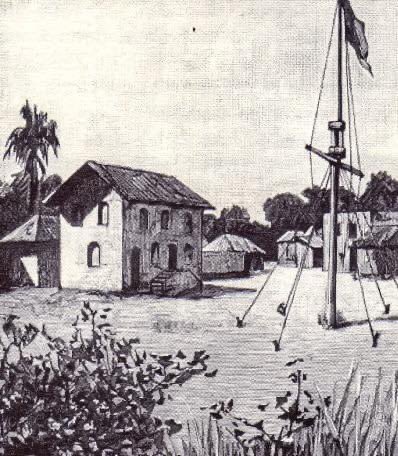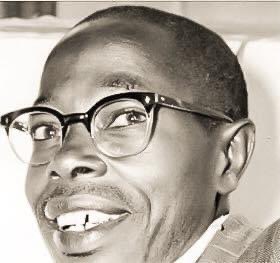#HistoryKeThread: Solidarity Rivalries
Ghana’s leader Kwame Nkrumah addresses the 1958 All African People’s Congress (AAPC) meeting in Accra, Ghana.
Seated cross-legged behind him, dressed in a dark suit, is Tom Mboya, the AAPC Chair.
Ghana’s leader Kwame Nkrumah addresses the 1958 All African People’s Congress (AAPC) meeting in Accra, Ghana.
Seated cross-legged behind him, dressed in a dark suit, is Tom Mboya, the AAPC Chair.

It is worth noting that earlier on, Mboya had expressed displeasure at the heavy-handed tactics that Nkrumah’s administration employed against Ghana’s Trade Union Congress (TUC).
Perhaps this is why Mboya’s demeanor in that photo may seem to some to be one of disapproval. Indeed, the relationship between these two African greats was everything but warm.
Nkrumah saw himself as Africa’s first leader, inasmuch as Ghana was the first black African country to gain independence in 1957. But he was also wary, and jealous, of Mboya’s growing fame around the continent. He felt that Mboya owed him for this newfound fame. 

Mboya was not only the AAPC Chair, but he was also Chair of the Organising Committee for an AAPC Summit scheduled for Tunis later in 1960.
However, in 1959, and aware that Mboya was away touring the United States, Nkrumah convened an urgent meeting of the Steering Committee of the AAPC in Conakry, Guinea. 

Technically, with Mboya away, the meeting was unconstitutional. But it did not matter to Nkrumah, whose allies went ahead and installed Abdoulaye Diallo from the host country as Secretary.
Meanwhile, Mboya flew back home from the United States and was, a few weeks later at a Summit held in Nairobi, elected Chair of the East, Central and Southern Africa Committee of the International Conference Of Free Trade Unions (ICFTU). 

As there were ideological differences among various trade unions bodies in the continent, the Nairobi meeting proposed a November (1959) conference in Lagos to iron out things. Of the 28 ICFTU member countries in Africa, all but one - Ghana - endorsed the Lagos conference.
Meanwhile, plans were afoot to launch yet another rival trade union body - the All African Trade Union Federation (AATUF).
In October of 1959, Nkrumah (pictured) once again convened a meeting of the AAPC Steering Committee in Accra. The purpose of the meeting was to discuss the launch of the rival Federation. 

Mboya, who had been invited to the AAPC meting, declined to attend, instead taking a swipe at Nkrumah’s unilateral maneuvers. On the other hand, Nkrumah’s allies at the Accra meeting castigated Mboya for his absence, and proceeded to replace him as Chairman.
Ghana’s Foreign Minister, Kojo Botsio, was elected to serve as new Chair.
Interestingly, the Accra meeting also passed a resolution to convene a Summit the following month, November, to launch AATUF. Further, the dates proposed for the launch - 4th-9th November, coincided with the Lagos ICFTU meeting.
Mboya wrote to John Teteggah, the General Secretary of the Ghana Trades Union Congress, asking for the Accra meeting to be scrapped. Teteggah wrote back to say that Mboya would be considered a traitor if he skipped the Accra meeting.
Inevitably, the two conferences, one in Lagos and the other in Accra, took place at the same time.
Guess who showed up in the Accra conference at the personal invitation of Nkrumah?
It didn’t matter much.
Majority of the ICFTU-affiliated countries attended the Lagos meeting.
Majority of the ICFTU-affiliated countries attended the Lagos meeting.
Only Ghana, Morocco, Guinea, Egypt and Trade Union Congress, a rival trade union body in Nigeria, took part in the Accra conference.
In the years that followed, another rivalry simmered between Mboya and someone else from his own backyard: Oginga.
• • •
Missing some Tweet in this thread? You can try to
force a refresh















